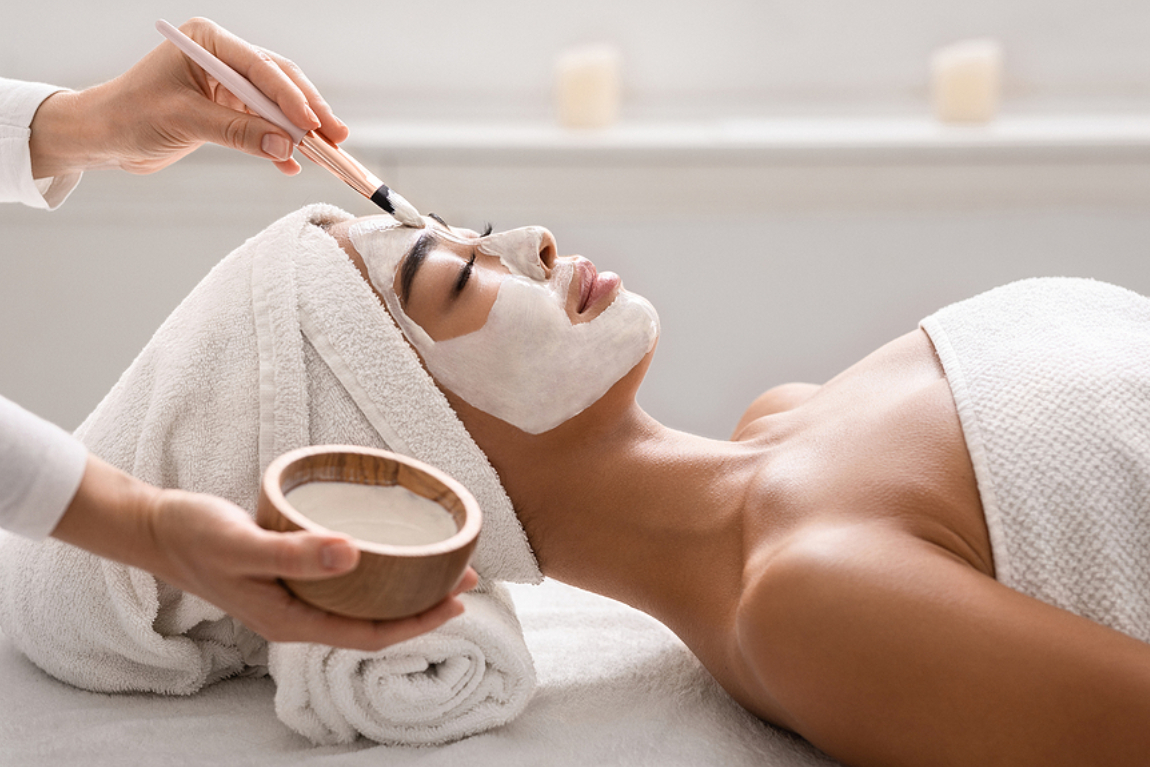
Facial treatments are an essential part of any skincare routine, and two terms that often come up when discussing treatments are “brightening” and “whitening.” While they are often used interchangeably, there are distinct differences between the two. In this article, we will explain the key differences between brightening and whitening facials, helping you choose the right treatment for your skin needs.
A brightening facial focuses on improving the overall radiance of your skin by removing dead skin cells, reducing dullness, and evening out skin tone. Brightening facials are designed to promote glowy Korean glass skin by targeting factors that contribute to a lack of radiance, such as pigmentation, sunspots, and dehydration.
During a brightening facial treatment, professionals often use exfoliating masks, serums, or chemical peels that encourage skin cell turnover. Ingredients like Papain Extract, Niacinamide (Vitamin B3), and Alpha Hydroxy acids (AHAs) are commonly used in brightening facials to improve skin texture, even out pigmentation, and boost overall luminosity.
For individuals with sensitive skin, it’s important to choose a brightening facial treatment that is gentle yet effective. Sensitive skin can be more prone to irritation, so opting for a treatment that uses calming, anti-inflammatory ingredients alongside brightening agents will help ensure a glowing complexion without causing redness or inflammation.
On the other hand, whitening facials are primarily designed to lighten specific dark spots or areas of hyperpigmentation on the skin. Whitening treatments aim to reduce the appearance of dark spots, sunspots, or melasma, typically by inhibiting the production of melanin, the pigment responsible for skin colour.
Whitening facials often contain ingredients such as Arbutin, or Vitamin C (Ascorbic Acid), Kojic Acid, Mulberry extract, which work to lighten skin discolouration and even out skin tone. While these treatments can be highly effective in targeting dark spots and pigmentation, they are typically more potent than brightening facials and may not be suitable for all skin types, especially those with sensitive skin.
It’s important to note that whitening does not necessarily aim to make the entire face lighter but focuses specifically on diminishing uneven pigmentation. It is a more targeted treatment than brightening facials, which improve the overall appearance of the skin.
Choosing between a brightening and whitening facial depends on your specific skin concerns. If you are looking to enhance your skin’s overall radiance and address general dullness or uneven skin tone, a brightening facial treatment is the ideal option. This treatment is perfect for individuals who want to achieve a natural glow without focusing on lightening specific spots.
However, if you struggle with hyperpigmentation or dark spots and want to target those issues directly, a whitening facial may be the more suitable choice. These treatments are designed to address pigmentation concerns and can help fade dark spots over time.
For sensitive skin, it’s always a good idea to consult with a skincare professional to ensure the facial treatment for sensitive skin you choose is gentle and effective. Whether you opt for a brightening facial treatment or a more targeted whitening treatment, professional guidance will ensure you achieve the best results without irritating your skin.
Both brightening and whitening facials offer unique benefits depending on your skincare goals. While brightening facials focus on improving the overall radiance and nourishment of your skin, whitening facials are designed to reduce pigmentation and lighten dark spots. Regardless of which treatment you choose, it’s important to select a facial that is tailored to your skin’s needs.
If you’re looking for a personalised facial in Jurong East, Bedok, Serangoon, Ang Mo Kio, or Vivo City, visit Adonis Skincare. Our experienced professionals can help you select the right facial for your skin type and concerns, ensuring you achieve the radiant, even complexion you desire.
Book your appointment today and let us help you achieve glowing, healthy skin with a customised facial treatment that works for you!
Get first access to our latest products, promotion & events.